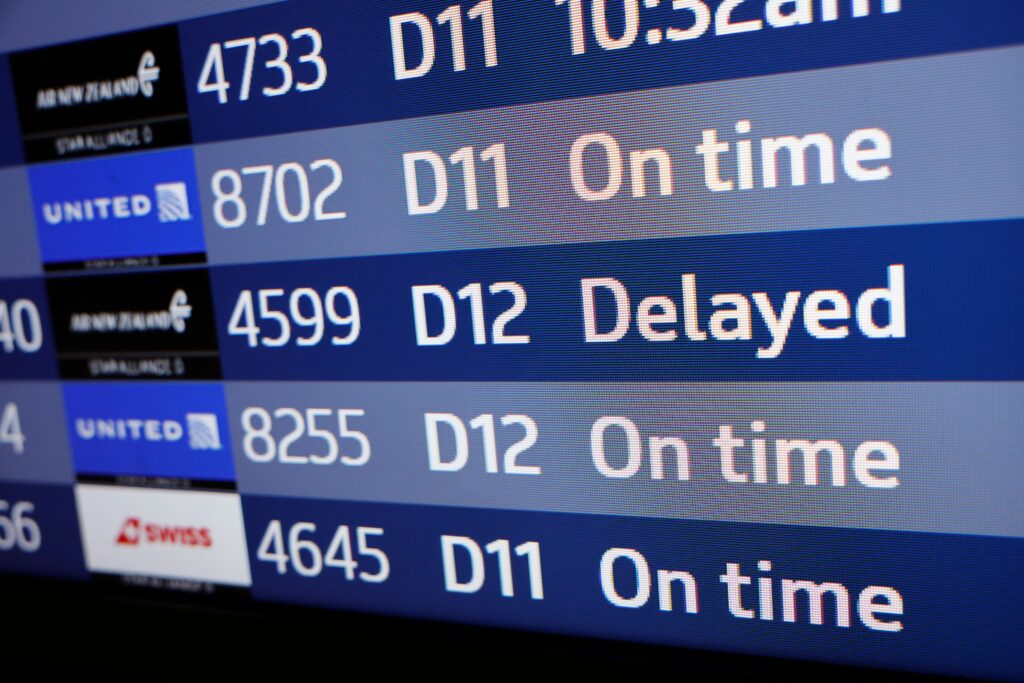Air traffic controllers are receiving at least some of their backpay. Airlines are revving up their operations to ensure they can transport the 31 million people expected to fly around the Thanksgiving holiday. And travelers across the U.S. are breathing a bit easier after a week-long span in which more than 5,500 flights were canceled and more than 23,000 were delayed.
Air traffic controllers are receiving at least some of their backpay. Airlines are revving up their operations to ensure they can transport the 31 million people expected to fly around the Thanksgiving holiday. And travelers across the U.S. are breathing a bit easier after a week-long span in which more than 5,500 flights were canceled and more than 23,000 were delayed.
The shutdown may be over, but the task of fixing deficiencies that have dogged the nation’s aviation system is far from complete: A dire shortage of certified air controllers, outdated equipment and lack of funding to update those critical systems.
These problems took on new urgency following the fatal Jan. 29 collision between an Army Blackhawk helicopter and an American Airlines regional jet over Washington, killing 67 people. The tragedy fueled an aggressive new push to “supercharge” the hiring of more air traffic controllers and modernize the system, with Congress appropriating $12.5 billion to pay for the upgrades.
This was the question on everybody’s mind, particularly as the shutdown, which began Oct. 1, extended into November. The Trump administration’s decision last week to cut the number of flights at 40 airports across the U.S. — including major hubs such as Hartsfield-Jackson Atlanta International, Chicago O’Hare International, Dallas Fort Worth International and John F. Kennedy International by 10 percent — only fueled visions of holiday travel mayhem.
But now that the government has reopened, airline executives say they’re well positioned to have their operations ready for the rush, providing the Trump administration order is lifted and weather cooperates. In a joint statement Friday, Transportation Secretary Sean P. Duffy and FAA Administrator Bryan Bedford said that airlines could increase the number flights they operate. Beginning Saturday morning, airlines will only have to reduce the number of flights by 3 percent, down from 6 percent.
Despite the fragility of the U.S. aviation system, it was fairly resilient during the shutdown, in large part due to front line workers who showed up to keep things moving even though they weren’t getting paid. Just days after the shutdown began, a staffing shortage at Hollywood Burbank Airport foreshadowed some of what might be ahead. But it wasn’t until airlines began implementing the FAA’s orders to reduce the number of flights they operate that significant disruptions, including cancellations, began to mount.
Workers were key, but a major factor was that airlines traditionally operate a lighter schedule in October than during other times of the year. Relatively good weather also helped. There were some major storms, but those impacts largely were limited. Airlines also have taken lessons from past challenges (think omicron in December 2021 and Southwest’s December 2022 meltdown) to become more nimble.
That said, it was clear that pressure was starting to build. The number of facilities that reported being short-staffed increased dramatically the closer controllers and other frontline aviation workers came to missing their second full paycheck, peaking at 81 last Saturday. (By Wednesday, as the House voted to end the shutdown, that number had dropped to four.)
The end of the government shutdown does not mean the end of the thorny issues facing the busiest and most complex airspace in the world.
Long before the shutdown, there were staffing triggers — instances where flights might have to be slowed because of a shortage of air traffic controllers. And these staffing triggers will persist.
The core problem is that the U.S. air traffic system is still thousands of certified controllers short of what it needs to be fully staffed. And while the reopening of the government means controllers will be paid for the work they do, many will still be required to work mandatory overtime — six days a week, 10 hours a day.
Duffy has launched an aggressive campaign to recruit more candidates, but it can take years to train new controllers — and many drop out before they are certified. And now the shutdown has raised concerns that the job may be less appealing if these frontline workers know they could go for weeks without a paycheck during future shutdowns. Duffy cited reports of an uptick in controller retirements and in trainees abandoning their training at the agency’s academy in Oklahoma City due to the shutdown.
Even so, the FAA was able to continue pushing forward with efforts to install new equipment to modernize the national airspace system. Duffy has $12.5 billion to build that system, although he would need upward of $30 billion to fully fund the effort.
Another bright spot: The FAA didn’t close the academy where it trains new controllers, something that happened during previous government shutdowns. That will make a significant difference in the effort to address the current shortage.
The post The shutdown is over, but the nation’s aviation problems are not.
appeared first on Washington Post.




